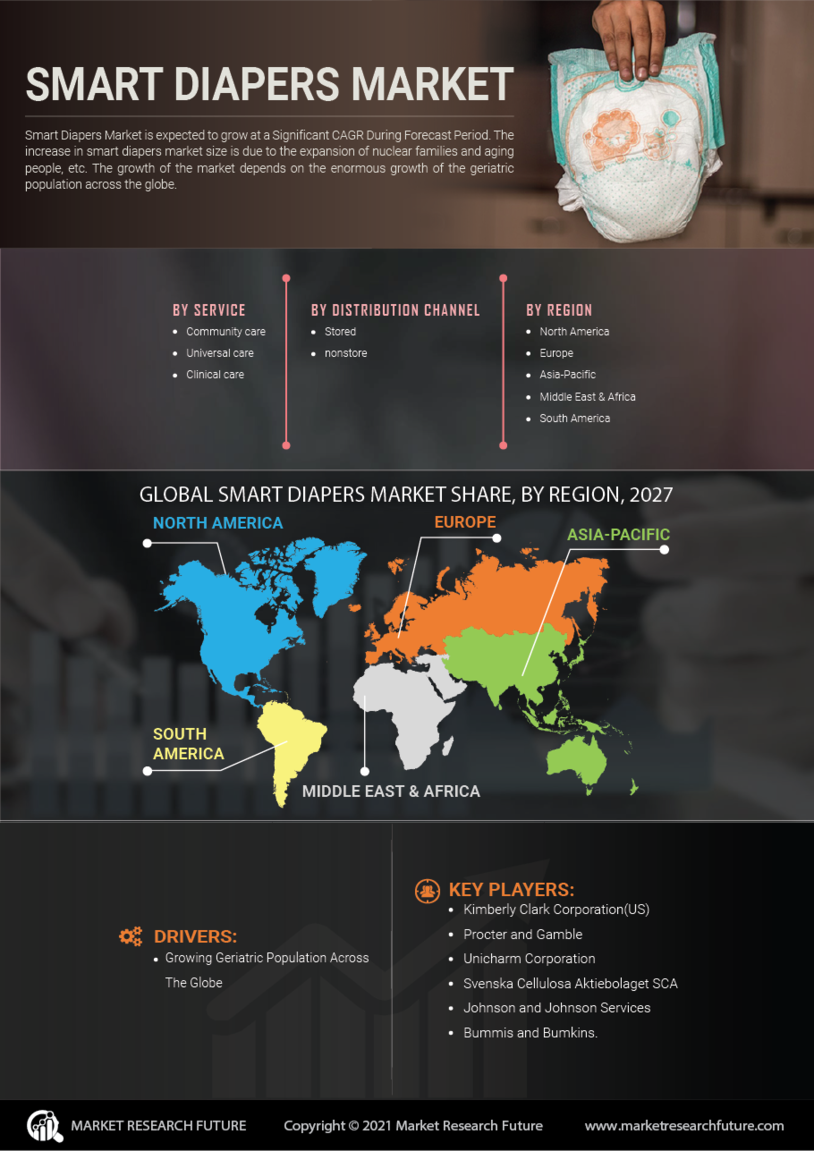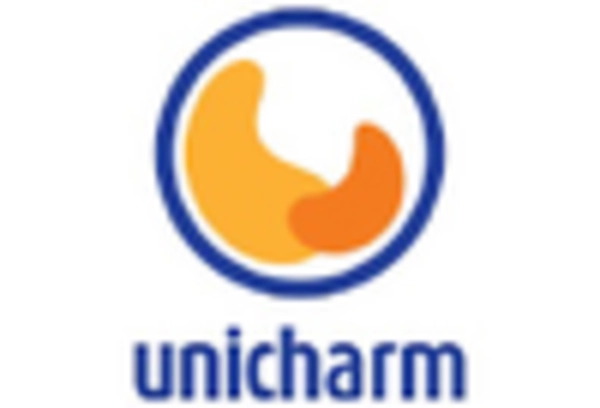Sustainability Trends
Sustainability trends are becoming increasingly relevant in the Global Smart Diapers Market Industry, as consumers show a preference for eco-friendly products. Manufacturers are responding by developing biodegradable and sustainable smart diaper options, which appeal to environmentally conscious parents. This shift towards sustainability not only addresses consumer concerns but also aligns with global efforts to reduce waste and promote responsible consumption. As the market adapts to these trends, it is expected to grow, with projections indicating a rise to 181.5 USD Billion by 2035. The integration of sustainable practices in product development may enhance brand loyalty and attract a broader customer base.
Market Growth Projections
The Global Smart Diapers Market Industry is poised for substantial growth, with projections indicating a market value of 36.3 USD Billion in 2024 and an anticipated increase to 181.5 USD Billion by 2035. This growth trajectory suggests a compound annual growth rate of 15.76% from 2025 to 2035. Such figures reflect the increasing adoption of smart diaper technology, driven by consumer demand for innovative and convenient solutions. The market's expansion is likely to be influenced by various factors, including technological advancements, rising awareness of infant health, and changing consumer preferences. These projections underscore the potential for significant investment and development within the industry.
Technological Advancements
The Global Smart Diapers Market Industry is experiencing rapid technological advancements, which are pivotal in enhancing product functionality. Innovations such as moisture sensors and connectivity features allow parents to monitor their child's needs in real-time. For instance, smart diapers can alert caregivers when a change is necessary, promoting hygiene and comfort. This trend is likely to drive market growth, as the industry is projected to reach 36.3 USD Billion in 2024, with a compound annual growth rate of 15.76% anticipated from 2025 to 2035. Such advancements not only improve user experience but also align with the increasing demand for smart health solutions.
Increased Disposable Income
The rise in disposable income across various regions is contributing to the growth of the Global Smart Diapers Market Industry. As families experience improved financial stability, they are more inclined to invest in premium products that offer enhanced convenience and health benefits. This trend is particularly evident in emerging markets, where the demand for innovative baby care solutions is on the rise. The market's expansion is supported by the anticipated growth trajectory, with an estimated value of 36.3 USD Billion in 2024 and a potential increase to 181.5 USD Billion by 2035. Higher disposable income enables parents to opt for smart diapers, reflecting a shift in consumer behavior.
Rising Awareness of Infant Health
There is a growing awareness regarding infant health and hygiene, significantly influencing the Global Smart Diapers Market Industry. Parents are increasingly prioritizing products that ensure their child's well-being, leading to a shift towards smart diaper solutions. These products often incorporate features that help prevent diaper rash and other skin irritations, thus appealing to health-conscious consumers. As the market evolves, it is expected to expand substantially, with projections indicating a rise to 181.5 USD Billion by 2035. This awareness is further fueled by educational campaigns and healthcare recommendations, emphasizing the importance of maintaining optimal hygiene for infants.
Urbanization and Changing Lifestyles
Urbanization is reshaping lifestyles and consumer preferences, which is having a notable impact on the Global Smart Diapers Market Industry. As more families move to urban areas, the demand for convenient and efficient baby care products increases. Smart diapers, which offer features such as connectivity and monitoring, align well with the fast-paced lives of urban parents. This demographic shift is likely to drive market growth, as urban consumers seek products that simplify their daily routines. The industry is projected to grow significantly, with a CAGR of 15.76% from 2025 to 2035, indicating a robust response to the evolving needs of modern families.

















Leave a Comment